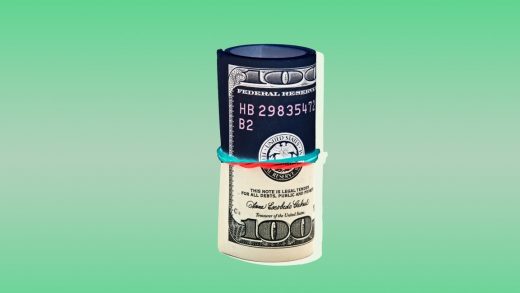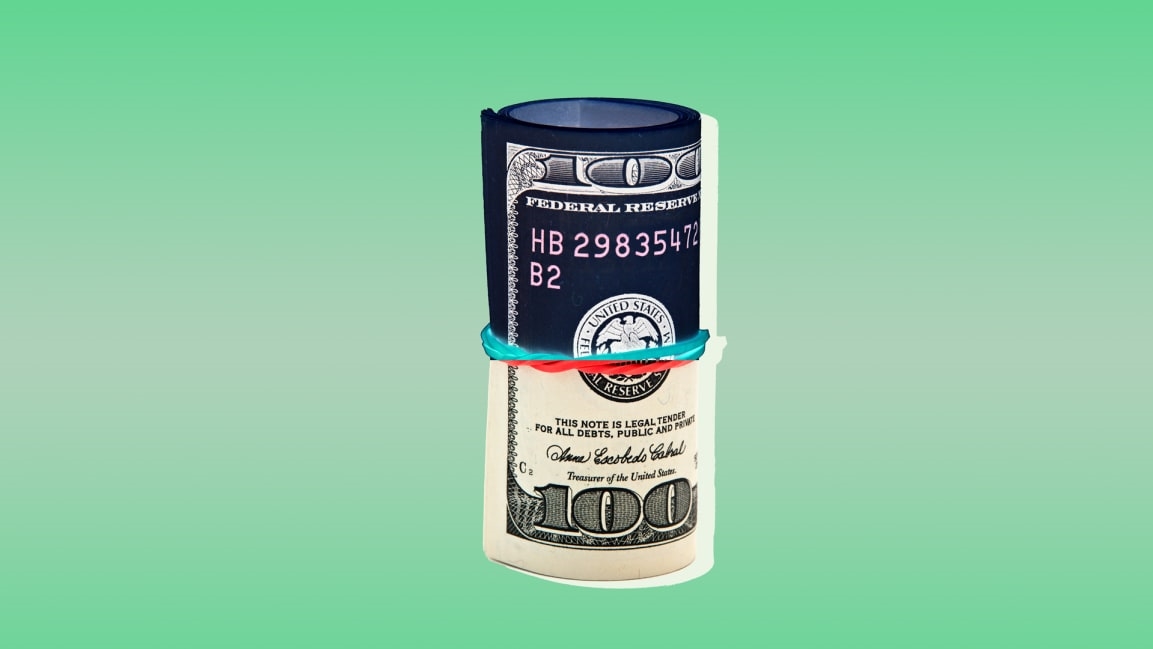The surprising way to beat the 1 thing your brain is hardwired to hold you back on
This post is about the best lesson I learned in 2021. And to tell you about it, I’ve got to tell you a story.
I got married this past fall, and my mind treats the whole thing like a giant Magic Eye poster. Nearly everything is blurry, but a few moments leap out. Those moments involve my closest friends, family, and wife.
And one random conversation I had with a stranger.
During the cocktail hour, I was introduced to one of my parents’ friends who’d recently retired from banking. She was sharp as hell, witty, and more than a bit intimidating.
After chatting for a few minutes I blurted out a question that in retrospect I’ll chalk up to the shot of tequila I’d just taken (thanks Uncle Dan).
“What’s the thing you did that had the biggest impact on you being so successful?”
She didn’t hesitate.
“Selling the position.”
I asked what she meant.
“People on my team were responsible for making money. The way they made money was through investment strategies—buying stocks or a basket of stocks or some other financial instrument that they felt was undervalued. When these positions were doing poorly, they’d have to defend them to me, and they would—tooth and nail.”
She took a dramatic gulp of cabernet.
“They always swore this tanking position was about to turn because of this reason or that. My job was to decide whether to give them more leash or cut bait. For a long time, I’d listen to each pitch and make case-by-case decisions, and our team performed fine. Middle of the pack. Until I came up with a much better strategy.”
She leaned closer and took an even more dramatic gulp of cabernet, possibly overdoing it, but I was hooked.
“I told them to sell the position. To go back to their desk and sell every dollar of whatever they were defending. Then, I told them to go home. In the morning, if they wanted to buy back what they’d just sold, they could, and they wouldn’t have to defend themselves to me. But 95% of the time they wouldn’t. Selling the position broke the spell. They suddenly had a bunch of money at their disposal and could see all the other strategies clearly. With unlimited options, they almost never chose the thing they’d owned the day before.
“Our team consistently outperformed because humans always overvalue what we already own—we get emotional about it—and selling the position removed that bias.
“The key to life is creating an environment that makes it easy and painless to drop the things that aren’t working fast.”
Loss aversion
My new wedding friend was describing loss aversion.
We’re all hardwired to value something we own twice what it’s worth. If a $10 bill falls out of your pocket, you’ll be twice as upset about losing it as you’d be happy if you found a $10 bill on the street.
We’ve all heard about this concept. But selling the position is an extraordinary way of combating it.
I built a dating app called Find Your Lobster back in 2011. It was similar to Tinder and Hinge, but a bit earlier than both. A lot of the work was good—even great—especially the branding and marketing. People still tell me how funny that lobster was.
But when Tinder and Hinge launched, we got steamrolled. They were superior products with better strategies.
As the ground shifted under our feet, it was clear to anyone with eyes that our strategy was a long shot. Well, except to me. I was blinded, captured by the spell of the great work we’d done, the good reasons we’d gotten into the space in the first place, and the strategy that had been creative and unique 18 months prior. I trudged along a doomed path for another year.
I should’ve sold the position.
But how would that even work? I couldn’t just quit Find Your Lobster then start it back up the next day.
How to sell the position
It’s easy to be jealous of my banker friend and write off the strategy as something you can’t do. Selling the position and buying it back is easy when you literally have a position in a marketplace you can sell and buy in a day. Maybe most important, the metric of what she was trying to do was clear: The team existed to make money.
Over the last few months, we’ve worked on re-creating this strategy practically with founders in Tacklebox. We’ve found a dead-simple way to execute it.
It starts with two questions, a whiteboard, and (sometimes) a bottle of wine.
- What do you want?
- If you had unlimited options available to get that thing, would you actively choose what you’re currently doing?
What we’ve realized is just the exercise of thinking through what you really want to see if you’d choose what you’re doing to get there is enough to break the loss-aversion spell.
Here’s how it would’ve looked with Find Your Lobster.
If I’d asked myself what I wanted out of Find Your Lobster, I would’ve quickly realized my passion was in building a business, leading a team, and being creative around marketing. Find Your Lobster had been a vehicle for that, but I was passionate about the process, not the customer. I didn’t really care if my customers got dates, which is about as big a red flag as you can have as an entrepreneur.
And if I’d done the exercise of “selling” Find Your Lobster while I was building it, I would’ve never bought it back. The first question would’ve made it clear I needed to do something where I was passionate about the person I was building for. And, ideally, be building lots of things.
I eventually got to what I do now, but the exercise would’ve saved 12 months.
These questions are hard—thus the wine—but important.
And don’t be afraid to use them on a smaller scale and on nonwork things. If you’ve been doing something—anything—for a long time, and it seems like the reason you’re doing it is just that you’ve been doing it, sell the position. See if you’d buy it back.
We’ve all got way too much to offer. No need to settle for something we wouldn’t choose.
Fast Company , Read Full Story
(27)



